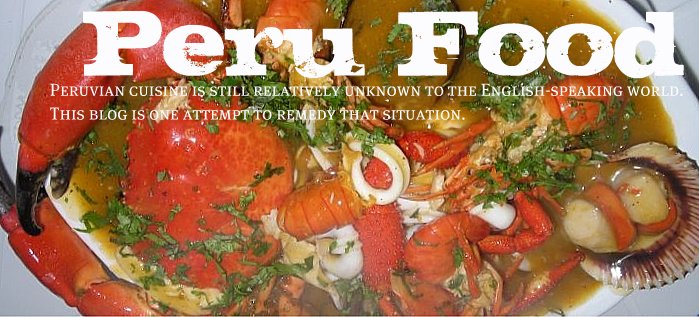In a recent post on his blog, Escape From Reality: The Foods of Cuzco, Braunwarth writes about his experience with Peruvian food in Cuzco.
He categorically states, "One of the great things about Cusco is the food."
Braunwarth uses the Spanish spelling for Cuzco. There is also a Quechua spelling, Qosqo.
In Cuzco, he notes, "the traditional Peruvian restaurants, generally on or near the Plaza de Armas ... serve set prices menus of a soup, a main course, and a drink or dessert for around $3-7." There are also "funkier, hip restaurants scattered around the historic center" popular with tourists.
But, he also notes that to experience the "real Peru", a visitor has to eat at the local "Picanterias, Cevicherias, Cuyerias, and Chicharronerias". These are all traditional restaurants specializing in one specific dish or cuisine. Faced with all the pizzerias and roast chicken places in Cuzco, he concludes, "it kind of defeats the purpose of going to a foreign country if you are going to eat the same food you can get in the U.S."
Like most travelers to Peru, Braunwarth was fascinated at the thought of sampling an Andean delicacy: cuy, or guinea pig. He writes, "Of first item of interest is, of course, Cuy or roasted guinea pig." After sampling roast cuy, he says, "I have to admit that I really liked it although the skin can be a bit chewy and one has to put in a pretty workout with the incisors to get a decent amount of meet off of the little rodents." At his blog, he has great pictures of cuyes in various stages of the cooking process (not for the squemish).
 Cuyería, a restaurant specializing in cuyes or guinea pig.
Cuyería, a restaurant specializing in cuyes or guinea pig.Photo by J. Braunwarth from Escape From Reality.
Braunwarth is also impressed by Andean corn: "The corn is worthy of mention itself. The kernels are huge and sweet and light yellow and ... usually served with the salty local cheese." He likes habas, a large bean served boiled, and the always-popular fried and salted corn kernels: "They're excellent with a glass of the local Cusqueña lager!"
He and his family enjoyed two types of fruit common in Peru, granadilla and chrimoya. About granadilla, he writes, "Once (you) break through the crunchy shell (you're) rewarded with a bunch of small seeds attached to each other by a kind of sweet viscous material. When you slurp down a glob, you get the interesting sensation of eating some that is sweet and smooth and crunchy all at the same time. With chirimoya, he says: "The flesh is sweet and fairly solid and surrounds big black seeds which you have to spit out as you eat."
This is a family of adventurous eaters, willing to try new foods. Although light-years from the haute cuisine available in the posh Lima restaurants, these traditional eateries are also a great way to sample Peruvian food.
Visit Braunwarth's blog to read about his travels in Peru and view his pictures: Escape From Reality.
Peru.Food@gmail.com
.
.
.
Click here for the Peru Food main page.
TAGS: Peru, Peruvian, food, cooking, cuisine, cocina, comida, gastronomía, peruana
TAGS: Peru, Peruvian, food, cooking, cuisine, cocina, comida, gastronomía, peruana


3 comments:
Hello, great site, I found a lot of useful information here, thanks a lot for Your work!
With the best regards!
David
Glad we could help!
Sweet site, I had not noticed perufood.blogspot.com before during my searches!
Keep up the good work!
Post a Comment